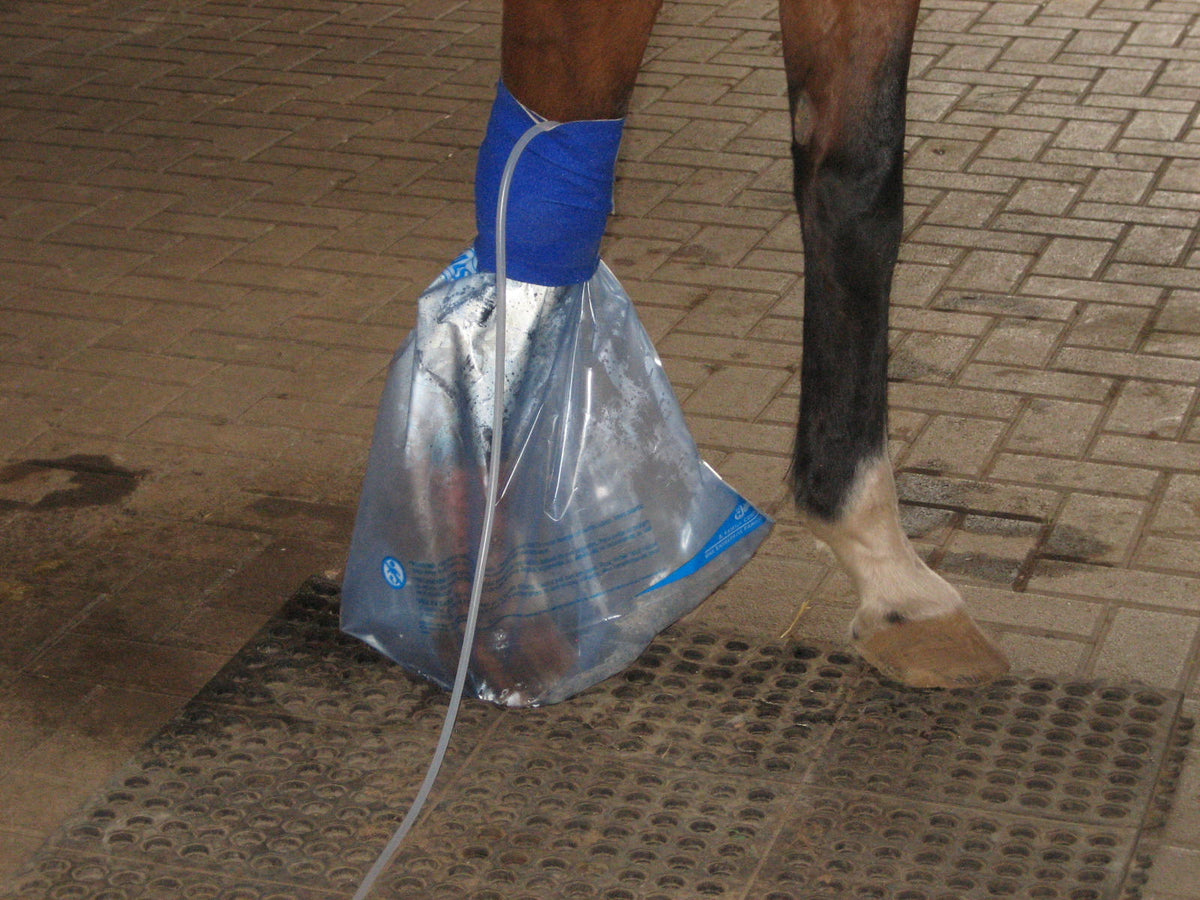Add description, images, menus and links to your mega menu
A column with no settings can be used as a spacer
Link to your collections, sales and even external links
Add up to five columns
Add description, images, menus and links to your mega menu
A column with no settings can be used as a spacer
Link to your collections, sales and even external links
Add up to five columns
Unlocking the Potential of Ozone Therapy in Equine Veterinary Practice
May 23, 2023 3 min read

Introduction
Veterinary medicine is an ever-evolving field, constantly presenting us with innovative therapies to enhance the well-being of our patients. Among these groundbreaking treatments, ozone therapy has emerged as a powerful tool in equine veterinary practice. By harnessing the unique properties of ozone, veterinarians can offer a range of benefits for equine health and potentially revolutionize the way we approach equine care. In this blog, we explore the remarkable advantages of ozone therapy in equine veterinary medicine and its potential to elevate our ability to provide optimal care for our equine patients.
1. Accelerated Wound Healing
Wound management is a critical aspect of equine veterinary practice, and ozone therapy offers a promising solution to enhance the healing process. Ozone acts as a potent oxygenator, optimizing tissue oxygenation and stimulating cellular metabolism in injured areas. By increasing oxygen levels at the wound site, ozone therapy accelerates tissue regeneration, aiding in faster healing and minimizing complications. Furthermore, ozone's antimicrobial properties can help reduce the risk of infection, making it a valuable tool in managing complex wounds, lacerations, and ulcers in horses.
2. Anti-Inflammatory and Pain-Relieving Effects
Inflammation and soft tissue injuries are common challenges in equine veterinary medicine, often causing discomfort and performance issues in our patients. Ozone therapy exhibits remarkable anti-inflammatory properties, providing a viable solution for managing these conditions. By modulating the immune response and reducing pro-inflammatory cytokines, ozone therapy effectively mitigates pain, swelling, and inflammation. This therapeutic approach can significantly contribute to the recovery of horses from injuries and inflammatory conditions, ultimately improving their overall well-being and performance.
3. Joint Health Optimization
Joint diseases, including osteoarthritis, pose significant challenges in equine veterinary practice. Ozone therapy offers promising benefits in improving joint health and managing arthritis-related symptoms in horses. Through direct administration into the affected joint, ozone reduces pain, inflammation, and cartilage degradation. Contrary to what you may suppose, it stimulates the production of antioxidant enzymes, facilitating the elimination of harmful free radicals that contribute to joint degeneration. By integrating ozone therapy into our treatment protocols, veterinarians can improve mobility, reduce pain, and enhance the quality of life for horses suffering from joint conditions.
4. Immunomodulatory Support
Ozone therapy's immunomodulatory effects provide veterinarians with a powerful tool to strengthen and regulate the immune system in equine patients. By enhancing the horse's immune response, ozone therapy aids in combating infectious diseases and improving overall resistance to illness. It activates immune cells such as macrophages and lymphocytes, enhancing their ability to identify and eliminate pathogens. With reinforced immune defenses, horses can better ward off infections, recover from illnesses, and maintain optimal health.
5. Optimization of Blood Oxygenation and Circulation
Efficient blood oxygenation and circulation are vital for the well-being and performance of equine patients. Ozone therapy plays a crucial role in improving these physiological processes. By enhancing the oxygen-carrying capacity of red blood cells, ozone optimizes tissue oxygenation, supporting cellular function and overall vitality. Improved circulation facilitates the efficient delivery of oxygen and nutrients to the horse's muscles, organs, and tissues, promoting their overall well-being and performance. Additionally, ozone therapy aids in the removal of metabolic waste products, supporting detoxification and improving metabolic function.
Conclusion
As veterinarians dedicated to equine healthcare, ozone therapy presents an exciting avenue for advancing our treatment capabilities. Its benefits, including accelerated wound healing, anti-inflammatory and pain-relieving effects, joint health optimization, immunomodulatory support, and blood oxygenation and circulation enhancement, make it an invaluable addition to equine veterinary practice. By harnessing the power of ozone therapy, we can elevate our ability to provide cutting-edge care, ensuring the well-being, performance, and longevity of our equine patients. As further research and clinical experience accumulate, ozone therapy holds the potential to revolutionize equine veterinary medicine and shape the future of equine healthcare.
1. de Souza, A. K. L., Colares, R. R., & de Souza, A. C. L. (2021). The main uses of ozone therapy in diseases of large animals: A review. Research in veterinary science, 136, 51–56. https://doi.org/10.1016/j.rvsc.2021.01.018
2. Tsuzuki, N., Endo, Y., Kikkawa, L., Korosue, K., Kaneko, Y., Kitauchi, A., Katamoto, H., Hidaka, Y., Hagio, M., & Torisu, S. (2016). Effects of ozonated autohemotherapy on the antioxidant capacity of Thoroughbred horses. The Journal of veterinary medical science, 77(12), 1647–1650. https://doi.org/10.1292/jvms.15-0225
3. Ávila, A. C. A., Diniz, N. C., Serpa, R. T., Chaves, M. M. B. C., Viu, M. A. O., & de Oliveira, R. A. (2022). Effectiveness of Ozone Therapy in The Treatment of Endometritis in Mares. Journal of equine veterinary science, 112, 103900. https://doi.org/10.1016/j.jevs.2022.103900
Net Orders Checkout
| Item | Price | Qty | Total | |
|---|---|---|---|---|
| Subtotal |
$0.00 |
|||
| Shipping | ||||
| Total | ||||
